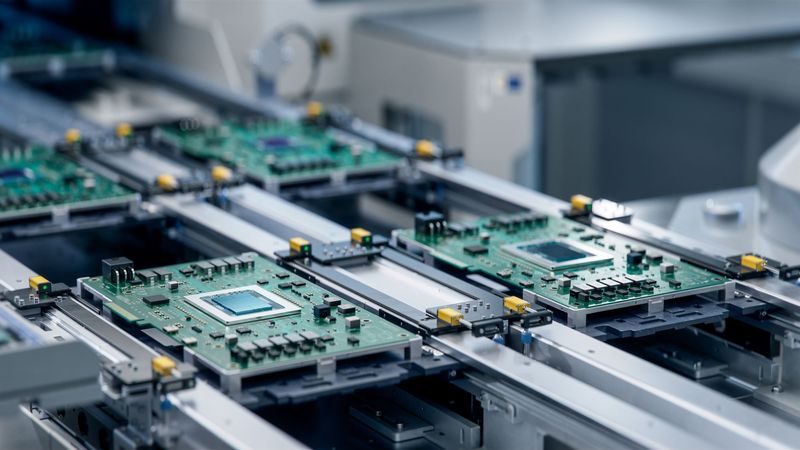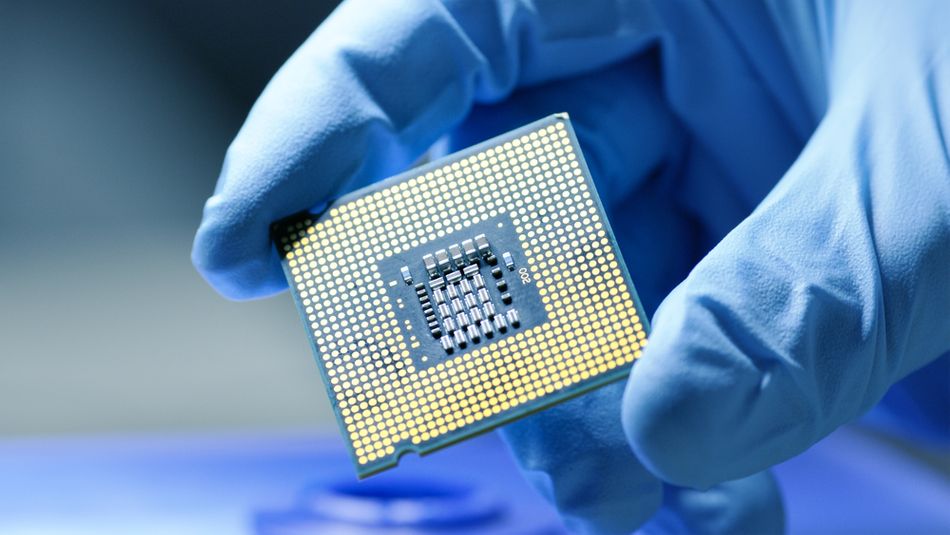The Causes of Component Obsolescence
Futureproofing Aerospace Series. Article #2: Understanding the causes of component obsolescence can help us better prepare for it.
Stay at the cutting edge of the aerospace industry
We are pleased to have partnered with Rochester Electronics to launch the Future-Proofing Aerospace whitepaper.
The aerospace industry is continuously evolving, driven by the need to modernize, improve efficiency, and drive down costs. However, as avionics – the electronic systems that power aircraft – continue to advance, the preservation of legacy systems becomes increasingly vital. This whitepaper offers critical insights into the importance of maintaining these systems, the challenges posed by component obsolescence, and the solutions available to navigate these complexities.
Whitepaper highlights:
- Understand the Importance of Legacy Systems: Discover why preserving legacy avionics systems is crucial for reliability, compliance, and cost-effectiveness.
- Navigate Component Obsolescence: Learn about the challenges aerospace designers face due to outdated or discontinued components and how to address them.
- Explore Solutions from Rochester Electronics: Gain insights into how Rochester Electronics specializes in preserving and replicating obsolete components to ensure the continued operation of legacy systems.
One of the most pressing threats to the continuity of legacy systems is component obsolescence. Obsolescence occurs when a component is no longer produced, supported, or available from the original manufacturer, rendering it difficult or impossible to procure. This situation poses a significant risk to the ongoing operation and maintenance of aerospace systems, as finding suitable replacements can be challenging and costly.
Components can become obsolete for a myriad of different reasons, and often, a confluence of various reasons ultimately renders a component obsolete. Influences such as market trends, technological advancements, and economic pressures all come into play in this unfortunate but unavoidable part of the electronics lifecycle.
At Rochester Electronics, we specialize in helping customers navigate the complexities of component obsolescence. Understanding the causes of component obsolescence is necessary for developing effective strategies to mitigate its impact.
Tester Platform Evolution
An important aspect of the component manufacturing lifecycle is the testing procedures that confirm product quality and functionality. To this end, component manufacturers employ a variety of specialized testing platforms, which entail complex and expensive equipment. In this context, one of the largest causes of component obsolescence is the obsolescence of the underlying testing platforms.
Consider a component first developed in the 1980s. At the time of development, the testing equipment used in the manufacturing process was likely state-of-the-art, meeting the frequency, power, and communication protocol requirements to test the component under test accurately. Fast-forward to today, however, and what was considered state-of-the-art for the testers in the 1980s is likely extremely antiquated.
Modern semiconductor devices operate at higher frequencies and lower voltages while employing newly developed communication protocols that didn’t exist in the 1980s[1]. Naturally, a testing platform from antiquity cannot support the testing of new components, and as such, the industry has moved towards newer, more advanced tester platforms. In moving away from legacy tester platforms, the industry also inadvertently pushes legacy components towards obsolescence, as the testing infrastructure needed for manufacturing is no longer supported or economical to maintain. As new tester platforms are often incompatible with legacy components, this incompatibility creates a significant hurdle for maintaining legacy systems. The inability to test these components effectively can lead to increased risks of failures and reduced reliability[2].
Advances in Silicon Fabrication Processes
In a similar fashion, component obsolescence is often a result of advances in the silicon fabrication processes used for modern components. As semiconductor manufacturers develop more sophisticated and efficient techniques, they introduce new generations of components with enhanced performance, reduced power consumption, and smaller form factors. These new components often lead to the end-of-life (EOL) status for older components because the previous technology cannot compete with the improved capabilities and efficiencies of the new models[3].
Additionally, as fabrication processes evolve, the equipment and materials required to manufacture older components become less available, increasing production costs and reducing the economic viability of continuing to produce these outdated parts. Manufacturers are more inclined to shift their resources toward producing newer, more profitable components that align with the latest fabrication technologies.
The impact of these advances extends beyond the components themselves. New silicon fabrication processes often necessitate updates in design software, testing protocols, and even supply chain logistics. Companies must adapt their entire ecosystem to accommodate these changes, further accelerating the EOL status of older components incompatible with the new infrastructure.
Package Obsolescence
Evolution in packaging technology for modern components can often be a driving force in the obsolescence of legacy components[4]. As packaging technologies evolve to meet the demands of modern electronics, such as smaller sizes, better thermal management, and greater power capacity, older packages become less viable, eventually phasing out components that rely on these outdated packages.
Packaging advancements are driven by the need for smaller, more efficient, and higher-performing electronic devices. Modern packaging techniques, such as Ball Grid Array (BGA), Chip Scale Package (CSP), and Wafer Level Package (WLP), offer numerous benefits over older methods like Dual In-line Package (DIP) or Small Outline Integrated Circuit (SOIC). These advanced packages enable higher pin counts, better thermal performance, and improved electrical characteristics, all of which are essential for contemporary high-speed and high-density applications.
When a new packaging technology is introduced, it often leads to the development of new components designed to take full advantage of the improved performance and miniaturization. This shift renders older packages less attractive, as they cannot match the benefits offered by newer technologies. Consequently, components that rely on older packages become obsolete as demand decreases and manufacturers shift their focus to producing components with modern packaging.
Moreover, the transition to new packaging technologies can lead to supply chain and manufacturing challenges. Older packaging equipment and materials may become scarce or more expensive to source and maintain, making it economically unfeasible for manufacturers to continue producing components with outdated packages. This economic pressure accelerates the obsolescence of components using older packaging technologies.
Economic Factors
Manufacturers may discontinue the production of no longer profitable components, particularly if demand has shifted to newer technologies[5]. Like many others, the aerospace industry is subject to market dynamics that influence the availability of components. As newer, more advanced technologies become prevalent, the demand for older components declines, leading to their obsolescence.
A notable variable in this equation is the cost inefficiencies associated with producing small quantities of obsolete components, which can be prohibitive for manufacturers. For instance, maintaining production lines for older components requires significant machinery, tooling, and skilled labor investments. These production lines often need specialized equipment and processes tailored to the specific requirements of the legacy components. As these components age, the machinery and tooling needed to produce them may also become obsolete, requiring costly upgrades or replacements.
Additionally, sourcing raw materials for obsolete components can present significant challenges. Materials used in older manufacturing processes may no longer be readily available, or their supply may have dwindled, driving up costs. Manufacturers must navigate these supply chain complexities, often dealing with higher prices for limited quantities of materials. This situation can further erode the profitability of producing obsolete components.
Given these economic realities, manufacturers often prioritize the production of components with higher demand and better profit margins. Newer technologies attract larger markets due to their improved performance, enhanced capabilities, and greater efficiency. As a result, manufacturers allocate their resources to developing and producing these advanced components, leaving older technologies behind. This shift in focus accelerates the obsolescence of legacy components as manufacturers gradually phase out their production to concentrate on more lucrative opportunities.
Conclusion
Component obsolescence is a major threat to the preservation of legacy systems. It is important to fully understand its potential causes to best prepare ourselves to handle the challenges arising from it. At Rochester Electronics, we’ve spent decades helping customers navigate the complexities of component obsolescence across all industries. In the next article in this series, we’ll look deeper at the challenges customers encounter when faced with obsolete components.
You can learn more about the future-proofing of the aerospace industry by diving into this insightful whitepaper.
Futureproofing Aerospace Whitepaper Highlights:
- Understand the Importance of Legacy Systems: Discover why preserving legacy avionics systems is crucial for reliability, compliance, and cost-effectiveness.
- Navigate Component Obsolescence: Learn about the challenges aerospace designers face due to outdated or discontinued components and how to address them.
- Explore Solutions from Rochester Electronics: Gain insights into how Rochester Electronics specializes in preserving and replicating obsolete components to ensure the continued operation of legacy systems.
You can learn more about the future-proofing of the aerospace industry by diving into our related article series.
Read more in the series:
Article 1: The Importance of Preserving Legacy Systems in Avionics
Article 2: The Causes of Component Obsolescence
Article 3: Customer Challenges with Obsolete Components
Article 4: Solving Obsolescence with Rochester Electronics
Article 5: Proactive Strategies for Managing Avionics Obsolescence
References
About Rochester Electronics
As an original manufacturer stocking distributor, Rochester has over 15 billion devices in stock encompassing more than 200,000-part numbers, providing the world’s most extensive range of end-of-life...




